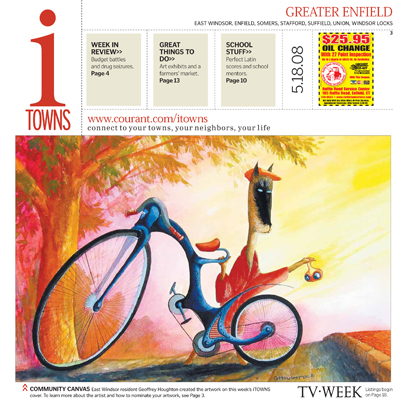The 15th World Editors Forum is going on in
- Two researchers discuss a study analyzing the five stages of news production and how journalism organizations are involving readers in each. Not surprisingly, most news outlets still don’t ask readers for much input until after the story is published, although a few are experimenting with early intervention. News editors still see their gatekeeper role as vital, the researchers say.
- Sweden’s Östersund Posten has launched a hyperlocal experiment involving 101 unpaid bloggers to write about community issues. Traffic is up 60% and so is advertiser interest, although no financial figures are cited.
- The CEO of Denmark’s Det Berlingske Officin, and editor-in-chief of Berlingske Tidende says journalists must give up their gatekeeper role and adapt to a new style of reporting that stresses reader participation and links. “The reader has broken the old circle of power,” says Lisbeth Knudsen.
- The managing editor of The Wall Street Journal’s wsj.com tells how an integrated approach to news reporting has helped double online traffic in the last year. Almar Latour says journalists are now encouraged to incorporate video, photos and informational graphics into their work. It hasn’t been easy to convince writers to put down the pen and pick up the camera, though. One tactic that’s helped has been the Most Popular List, a constantly updated report on the stories that are getting the most traffic. The list has generated healthy competition between reporters.
- The assistant managing editor of the
UK ’s Daily Telegraph tells how one-week training programs intended to help the newsroom adapt to multimedia have improved camaraderie and morale - The editor-in-chief of
Germany ’s Tide sings the praises of citizen journalism as a cost-effective way to develop content, but warns that citizen “reporters†need to be trained that quality is as raw content. The paper has trained almost 200 ordinary folks, who now contribute an hour-and-a-half of video a day to the site, says Werner Eggert. - The editor-in-chief of the national Danish newspaper Kristeligt Dagblad tells how adding weekend editions and offering defecting readers the chance to switch to a smaller weekend-only package has doubled circulation. Erik Bjerager says the new editions are less newsy and more focused on Christian values.
- The Innovations International Media Consulting Group presents its annual survey and calls upon newspapers to be more innovative. It singles out several papers for praise, including The Spokesman Review of
Spokane ,WA , which has invited anyone in the community to attend its daily news meeting. - The managing editor of
India ’s Mint business newspaper tells how his publication survived in a highly competitive market by making journalistic ethics a differentiator. - The founder and editor-in-chief of Rue89.com tells of journalism without print and says that life is good. The French website combines professional journalism with blogger and reader input to create rich content at low cost. Many of the best stories have come from reader comments, says Pierre Haski.
- Svetlana Khoroshev, whose role at Russian business newspaper Delovoy Peterburg isn’t identified, says the print publication has managed to connect with the famously print-averse youth audience by incorporating content from a popular MySpace-like community and spreading word-of-mouth through entrepreneurs.
- The head of development at
Norway ’s VG Multimedia tells how the popular vg.no news website for adults was able to extend its appeal to the youth audience by launching a social network. Jo Christian Oterhals says Nettby.no now has 61% of the teen market, although the model hasn’t necessarily transplanted well to other countries.
Comments Off on Swedish Message: Publishers and Editors Talk of Change

 Billionaire sports fan Mark Cuban
Billionaire sports fan Mark Cuban 

